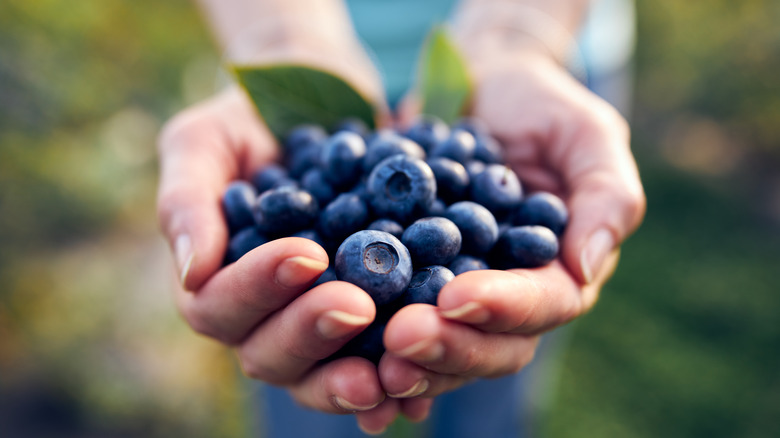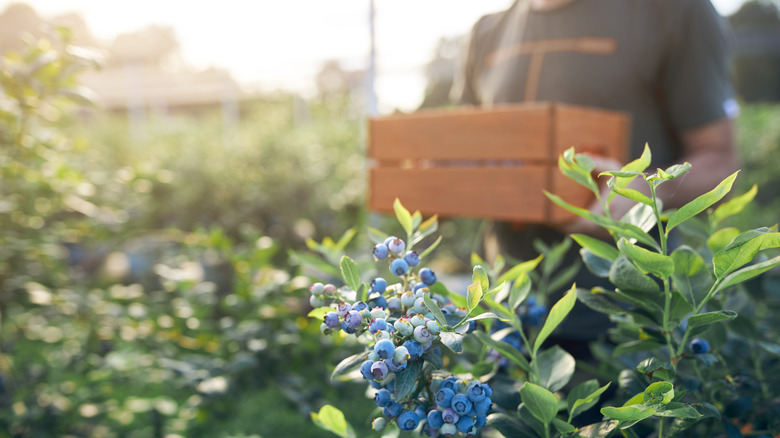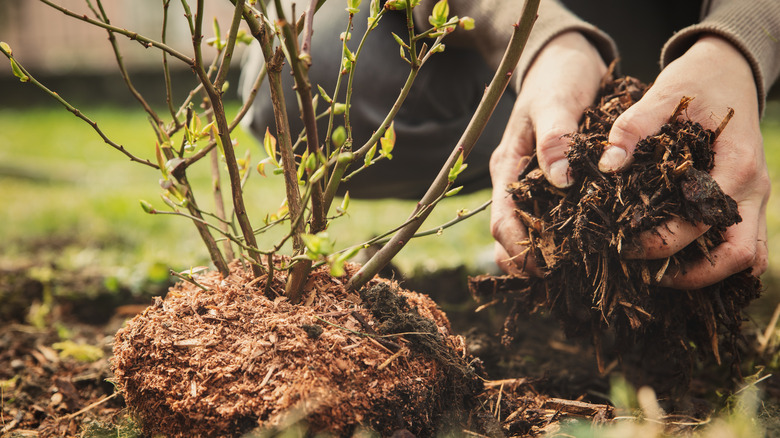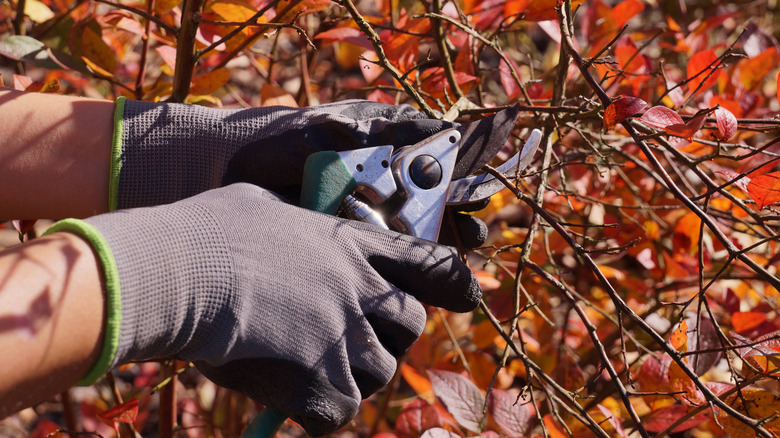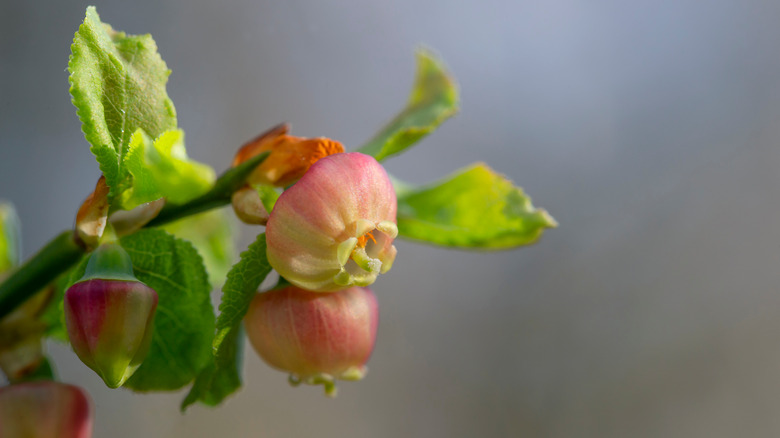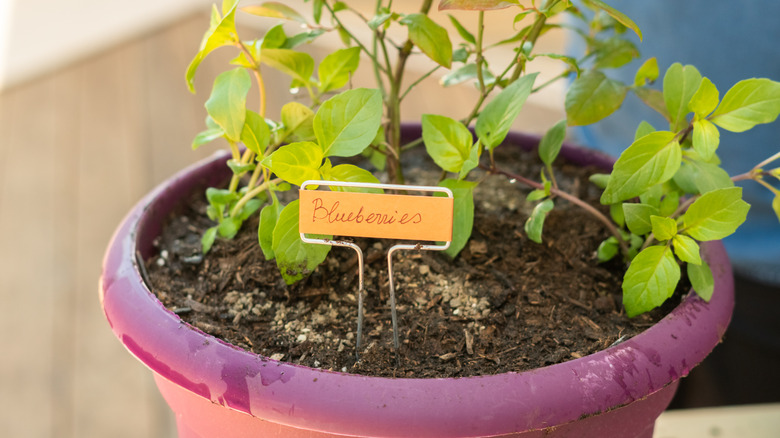How To Grow And Care For Blueberry Plants
Blueberry plants (genus Vaccinium; family Ericaceae) are related to bilberries and cranberries, all of which reside in the same genus. Nearly everyone who's complained about a weight problem has groused at one time or another that everything that tastes good is bad for you. Not so the humble blueberry: It's considered one of nature's "superfoods" and is loaded with antioxidants and infused with prebiotics. It's been shown to lower blood pressure, improve insulin sensitivity and cholesterol levels and boost cognition. And you'll find it's been used in dyes for centuries to create a joyous array of blues and purples and even put on display in clusters to adorn women's hats.
Blueberries also make the ideal meal companion. At breakfast, you'll find them in oatmeal, pancakes, and smoothies. At lunch, you'll see them in jams, jellies, and preserves. At dinner, they're sprinkled over salads and served hot or cold in cobblers and pies. And not only are they great-tasting and good for you all on their own; If you've ever tasted blueberry-banana pie, you know they pair well with a variety of other flavors.
And when you grow them on your own, these self-pollinating plants provide a singular touch of Americana to any home, garden, or farm. In fact, they're so hearty and pest-resistant, you can grow them in every weather zone from New York to California.
How to use blueberries in the garden
Just when you think these little delicacies have done all they can to impress, there's more. Because blueberry bushes are related to mountain laurels, azaleas, and the rhododendron, they will bloom for you, too. They welcome spring by producing flowers, and as fall arrives, their foliage turns to autumnal tones of yellow, orange, and red. Of course, like most fruit plants, trees, and bushes, it's those blooms that become fruit. In spots where the weather gets truly frigid, blueberry bushes respond by blushing a deep red — which can be an eye-popping pleasure during those dreary months of winter.
Not only are they self-pollinating and make for excellent ground cover; if you plant two varieties close to one another, another series of minor miracles will occur: You'll not only get a greater yield of blueberries that will actually be larger, you'll enjoy a longer harvesting season.
How to grow blueberry plants
Growing blueberries requires a degree of focus on several fronts. One is the periods during which the variety you've chosen will ripen. If you pick an assortment, you'll be in blueberry heaven from summer until winter sets in.
Blueberries favor acidic beds, and soil tests can help you discover the pH of the ground you intend to plant. At $25, they're relatively cheap and available at county extension offices locally around the country. Be patient. You'll be waiting a few weeks for their report, but they provide everything you'll need. And in the end, you'll have an in-depth description of your soil, including its pH level.
Should your soil be neutral (say around 7.0), you'll want to add sulfur, which is an organic soil acidifier. It's generally sold either in pellets or as a powder. According to Joe Gardener.com, the powder form is not only more expensive, its breathability makes it a less healthy option. Stick to the pellets.
When you're ready to plant, spread sulfur over the spot you've picked, incorporating the sulfur and soil as you're digging the hole. In addition to preferring an acidic bed, blueberry bushes like consistently damp and well-aerated soil that's abundant in organic matter. Although it may seem counterintuitive, these plants strongly prefer peat moss to compost.
Add your peat moss to the soil you've extracted, place your rootball in its new home and backfill the hole with a generous amount of peat moss along with soil.
How to care for blueberry plants
The first rule in blueberry plant care 101 is to keep in mind that these bushes have no root hairs. Instead they have an intricate web of roots that run threadlike around and under the plant. You need to know this because you'll now have a better grasp of why they're so particular about soil moisture.
Ask the gardeners at Arbor Day Foundation, and they'll tell you that peat moss (or aged sawdust and/or pine needles) will help you save water while keeping the water content of your soil as constant as possible. If you can keep the image of a lightly wrung sponge in mind, that's the ideal habitat for blueberry plants, which prefer to be watered during daylight hours. They'll want something close to an inch a week during growth stages and as much as four inches a week while they've got ripening fruit on their branches. And don't just keep the surface moist; make sure your watering gets an inch or so into the ground. For the best results, give them 360 degrees of attention — all the way around the bush. Too little water gets you tiny berries. Too much yields a crop that's large in size, but diluted in flavor.
Blueberry plants produce shallow roots, so you'll want to use extra care when it comes to weeds. Don't hoe. Get in with both hands and extract any weeds you find manually.
Varieties of Blueberries
Scientists separate blueberry plants into five different main categories: Rabbiteye, northern and southern highbush, the half-high hybrid, and lowbush. For the average DIY gardener, though, it's even more simple than that because the plant most people grow and harvest from is the highbush. The experts at Gardening Know How say that within this species (including the northern and southern varieties), there are variants aplenty that will tolerate different climates and yield fruit that are anything but uniform in flavor and size.
Highbush plants earned their popularity by being less prone to disease and self-fertilizing. Cross-pollinating with a different plant will get you bigger and juicier berries, too. Lowbush and rabbiteye are notable for not being self-fertile and require different cultivars. While Highbush may be the most versatile under the widest variety of conditions, lowbush is actually the more cold-tolerant of the two since it does well in freezing temperatures. Northern and lower highbush actually get their names from the climes where they do best in the States. Rabbiteye enjoys sweltering southern summers so well that some plants can grow a dozen feet high. They're also more forgiving when it comes to soil conditions. And, for some, saving the half-high for last is the best since it likes life in containers.
How to repot blueberry plants
Since it can take five years for a blueberry plant to start yielding edible fruit, being mindful of the time and money you've invested makes good sense. That said, you can keep them outside or bring them indoors, so they're under a watchful eye.
Highbrow plants are commonly kept outdoors, but they can also do well potted. You'll want a weather-proof container (planters in the wooden barrel style are particularly good, say the gardeners at the University of Maryland). Plants at full adulthood require containers between 24 and 30 inches in width and two dozen inches deep. You can also start with a smaller variety and continue to move the plant as it matures. (You'll want to do that before fall sets in for the season so that your plant's root system is secure.)
If you have an immature plant, remove its spring flowers to encourage its focus on growing roots. Place it in a 50/50 mixture of peat moss and potting soil, and make certain the mix is completely wet before potting it. When you move your plant, make sure it rests at the same depth as before. Then water it generously again.
Blueberries need their sun, but be wary that late afternoon sunlight could be detrimental. Remember to use acidic fertilizers and keep your soil moist and drainable. Cover your berries with a floating row cover or bird netting as they start to ripen and keep them protected from harsh winter weather.
